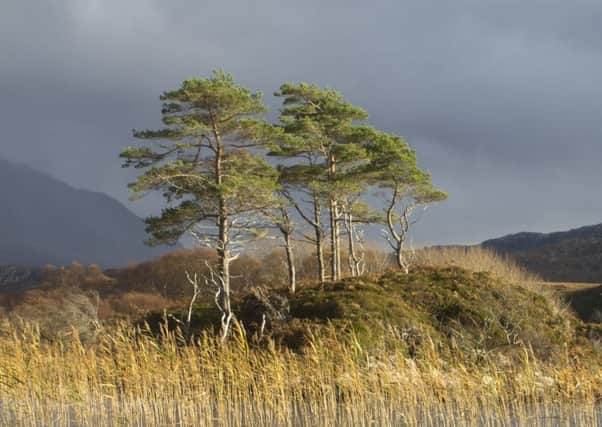Sheep, storms and disease threaten Scots pine


Trees for Life has revealed that several giant pines, probably more than 200 years old, were uprooted and blown over in severe gales in December, at their Dundreggan conservation estate near Loch Ness.
Others were badly damaged, while some more ancient pines were also lost in the Glen Affric national nature reserve.
Advertisement
Hide AdAdvertisement
Hide AdThe charity – which played a key role in the campaign that led the Scottish Parliament to name the Scots pine as the country’s national tree – is warning that higher priority must be given to the only tree named after Scotland.
Executive director Alan Watson Featherstone said: “Declaring the Scots pine as a national symbol sends a signal to the world that Scotland values its trees as an important part of its culture and identity.
“But with alarm bells ringing for this remarkable tree’s future, we should strengthen conservation action now.
“Our national tree is under siege from climate change, extreme weather and disease. We owe it to future generations to ensure its long-term survival by being world leaders in reforestation.
“We call on the Scottish Government to use the upcoming revision to the Scottish Rural Development Programme – the principal funding stream for forest schemes in Scotland – to ensure that support for native pinewood restoration is maintained and enhanced.”
The winter’s severe storms have highlighted the vulnerability of even well-established Scots pines to extreme weather, something the charity claims is likely to increase with climate change and also the lack of young trees to replace mature specimens when lost.
The charity said the recent losses were part of a forest’s natural cycle, creating “light gaps” where new life can begin, and trees will eventually grow there again. Yet the full process will take decades or more, and it will be at least 200 years before trees comparable to those lost reach maturity.
Loss of habitat provided by large mature pines can also have a significant impact on biodiversity, as species that are dependent on old trees have nowhere else to live.
Advertisement
Hide AdAdvertisement
Hide AdTrees for Life also pinpoints overgrazing by sheep and deer for two centuries as preventing natural regeneration of pinewoods in the Highlands.
In a healthy forest ecosystem, deer numbers would be in balance with regenerating trees – but imbalances in the Highlands landscape have created a 200-year generation gap for Scots pines.
Until fencing and conservation-oriented deer culling began in the last two decades, they say there were no trees younger than 150 years in most locations.
The charity said active restoration measures are under way for many of Scotland’s best pinewood remnants.
Trees for Life has planted more than one million trees at dozens of sites in the Highlands, and has pledged to establish another million trees by planting and natural regeneration by 2018.